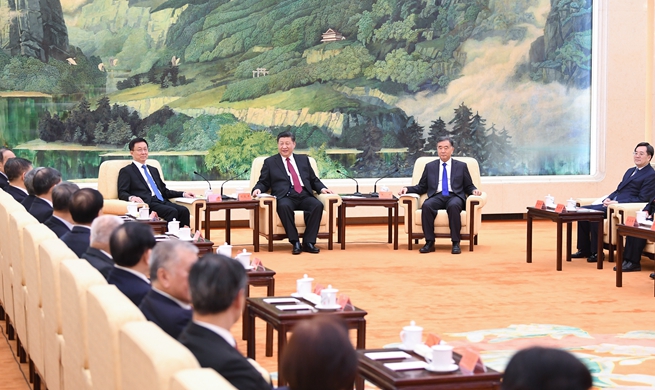WASHINGTON, Jan. 28 (Xinhua) -- American and Spanish scientists have developed a flexible device that can convert Wi-Fi signals into electricity to power electronics, wearable gadgets and medical devices.
The study published on Monday in the journal Nature described the fully flexible radio-frequency antenna that can convert AC electromagnetic waves into DC electricity.
The antenna is made of a novel two-dimensional rectifier called molybdenum disulfide (MoS2), which is just three atoms thick, making it one of the thinnest semiconductors in the world.
When the AC signals including Wi-Fi travel into the semiconductor, they convert into a DC voltage that can power circuits or recharge batteries, according to the study.
Also, the device is flexible, so it can cover very large areas such as building surfaces.
"We have come up with a new way to power the electronics systems of the future by harvesting Wi-Fi energy in a way that's easily integrated in large areas," said the paper's co-author Tomas Palacios, an electrical engineering professor at Massachusetts Institute of Technology (MIT).
In experiments, the device can produce about 40 microwatts of power when exposed to the typical power levels of Wi-Fi signals which are about 150 microwatts. It's enough to light up a simple mobile display or silicon chips.
Most of the previously reported flexible rectifiers cannot operate at low frequencies so that they cannot capture and convert in gigahertz frequencies used by cell phone and Wi-Fi signals, according to the researchers.
But the MoS2 material is much faster at signal conversion and allows it to capture and convert up to 10 gigahertz of wireless signals.
The maximum output efficiency for the current device stands at 40 percent, depending on the input power of the Wi-Fi input. At the typical Wi-Fi power level, the power efficiency of the MoS2 rectifier is about 30 percent, according to the study.
Plus, the device can be used to power implantable medical devices since it will not leak toxic lithium.
"It is much better to harvest energy from the environment to power up these small labs inside the body and communicate data to external computers," said the paper's co-author Jesus Grajal, a researcher at the Technical University of Madrid.

















